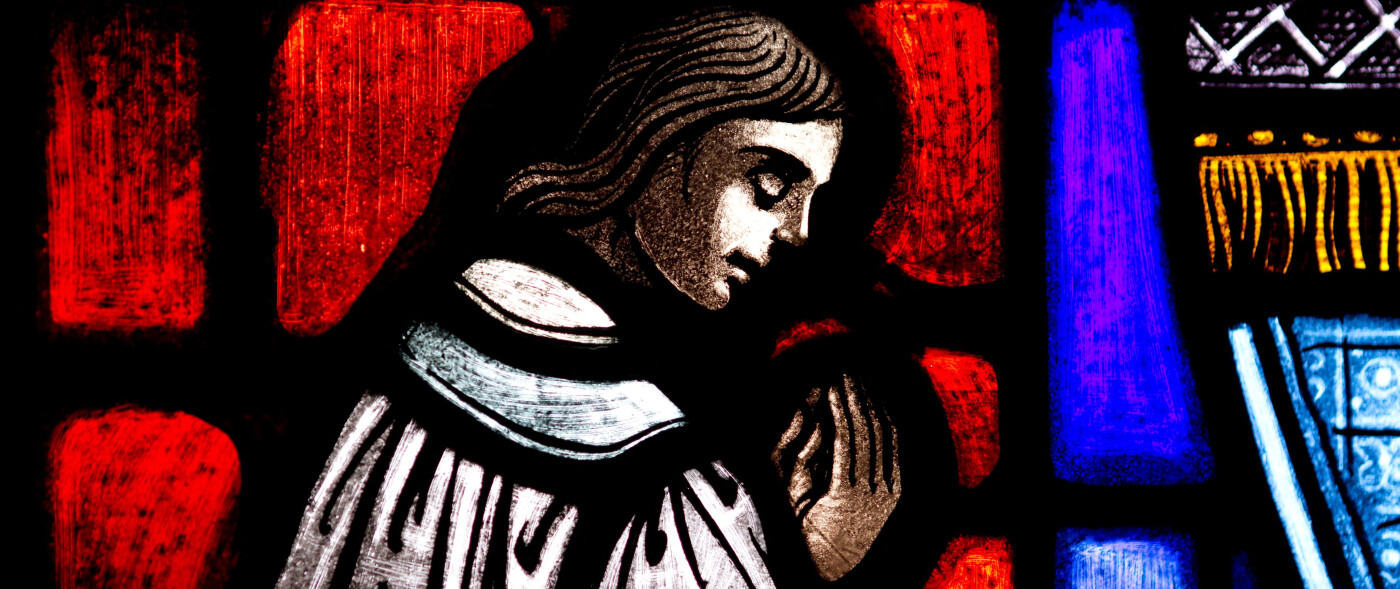Getting Ready for Sunday: Luke 9:28-36: The Transfiguration
In Exodus, Moses went up to the mountain to receive the law. And God met him there. God was present in a cloud covering the mountain. Moses entered the cloud into the presence of the Lord to receive the law, and the presence of the Lord made Moses’ face shine with the light of the Lord’s reflected glory. But the glory did not come from Moses. It was God’s glory. Moses put a veil over his face, so that the people could not see the reflected glory fading between meetings with God. Furthermore, Moses’ death was witnessed by no one but God himself.
In I Kings, Elijah also went up to the mountain to meet with God. It may have been the same mountain (!), although that isn’t entirely clear from the texts. In any case, when God met with him there, Elijah covered his face with his cloak. The act is not explained, but it would seem that the prophet is refusing to claim for himself the right to speak with God “face to face,” as Moses did. Even so, God took him up bodily into heaven. You may remember the famous scene of his departure in the fiery chariot.
So here we have two men who were called by God to be instruments of his revelation. Moses represents the Law, and Elijah represents the later prophets sent to uphold it. Both of them went up a mountain to meet God. And both are understood to be with God, since neither of them was seen to die. And both of these men, representing the entirety of God’s revelation, “the law and the prophets,” now descend from the presence of God in heaven to meet with God in the flesh upon the mountain. They have been in the presence of God in heaven, and they are full of the reflected glory of that presence. But Jesus, to whom both the Law and the prophets pointed, is present. And he is revealed in his true identity as the one whose natural state is glory.
Jesus’ face changes, and “dazzling white” doesn’t begin to cover it. Everything upon his person becomes so bright that it is flashing like the brightest lightning. Moses and Elijah “appear in glory”, but Jesus simply appears for once as what and who he is. He does not reflect anyone else’s glory. The glory that is in him is simply allowed to be visible. And, of course, the cloud of God’s presence is here, as well. The disciples are terrified, because they know what the cloud and the brightness mean: that they are entering the presence of God, which, in Exodus, meant death to everyone but Moses. The voice from the cloud is reminiscent of the voice of God speaking to Moses and Elijah, and it answers the thoughtless words of Peter by commanding him to listen rather than presumptuously directing Jesus, who alone is the elect son of God.
It is interesting that at this, the moment of his most visible glory, Moses and Elijah speak with him about what is perhaps in earthly terms his lowest moment, the crucifixion. Literally, the word translated “departure” is “exodus,” clearly a euphemism for his death, but also another reminder that God’s work in Christ is continuous with everything else that God has done in, among, and for his people since the beginning, since it also refers to the great defining moment of Israel, their salvation from slavery in Egypt.
In the same way, the sacrifice of Jesus on the cross is the defining moment of the Christian church. We were enslaved by sin and death, just as Israel was enslaved in Egypt, and Jesus saved us by his death in our place. So the crucifixion is truly our exodus. It is also, in reality, the moment of Christ’s greatest glory. On the cross, it may seem that Christ has lost, but he has actually conquered. The Transfiguration on the mountain is a sign for us who are slow on the uptake. But the cross, like the Exodus, reveals the true glory of a God who spares no expense or suffering to rescue his beloved creation.
The Rev. Garrin W. Dickinson is Rector of The Church of the Holy Nativity in Plano


